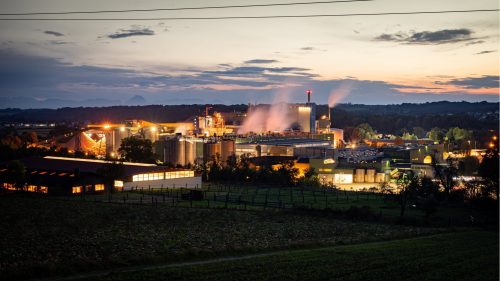Smurfit Kappa has confirmed a new project at its Nettingsdorf paper mill in Austria that will utilise waste heat generated at the mill to help power a sustainable district heating solution for the local community of Ansfelden.
Construction is already underway on the new heat extraction plant, which is a joint venture with Bioenergie Group. The project is a further example of how Smurfit Kappa works with local communities to minimise waste and find uses for by-products. The Nettingsdorf mill has recently completed the Future Energy Plant project which invested €134m in a state-of-the-art new recovery boiler to achieve significant reductions in both the use of fossil fuels and CO2 emissions.
In the latest district heating project, up to 25 megawatts of heat generated in the production process will now be captured and converted through the new heat extraction plant. This heat will be supplied to the district heating network that connects to 10,000 households in Ansfelden, providing a sustainable and secure energy source and demonstrating the positive environmental impact of the collaboration on the local community.
Commenting on the announcement, Günter Hochrathner, CEO, Smurfit Kappa Nettingsdorf, said, “This project is another important step forward in advancing sustainability here at our mill in Nettingsdorf. We will capture the waste heat in the most environmentally friendly way possible, to significantly reduce the discharge of heat into the environment. We anticipate that this will significantly reduce the CO2 emissions of the surrounding district by as much as 20,000 tonnes per annum.”
Jakob Edler, Managing Director, Bioenergie Group, said, “As a result of this project, we will feed into an untapped energy potential at the mill in Nettingsdorf. Together with Smurfit Kappa, we will be able to provide an environmentally friendly form of energy to thousands of households, eliminating the need to burn fossil fuels, and save a significant amount of carbon dioxide in the process.”
The project is similar to another example of close collaboration with the local community in which Smurfit Kappa used secondary heat from its Piteå paper mill to develop an efficient district heating scheme for local residents.




